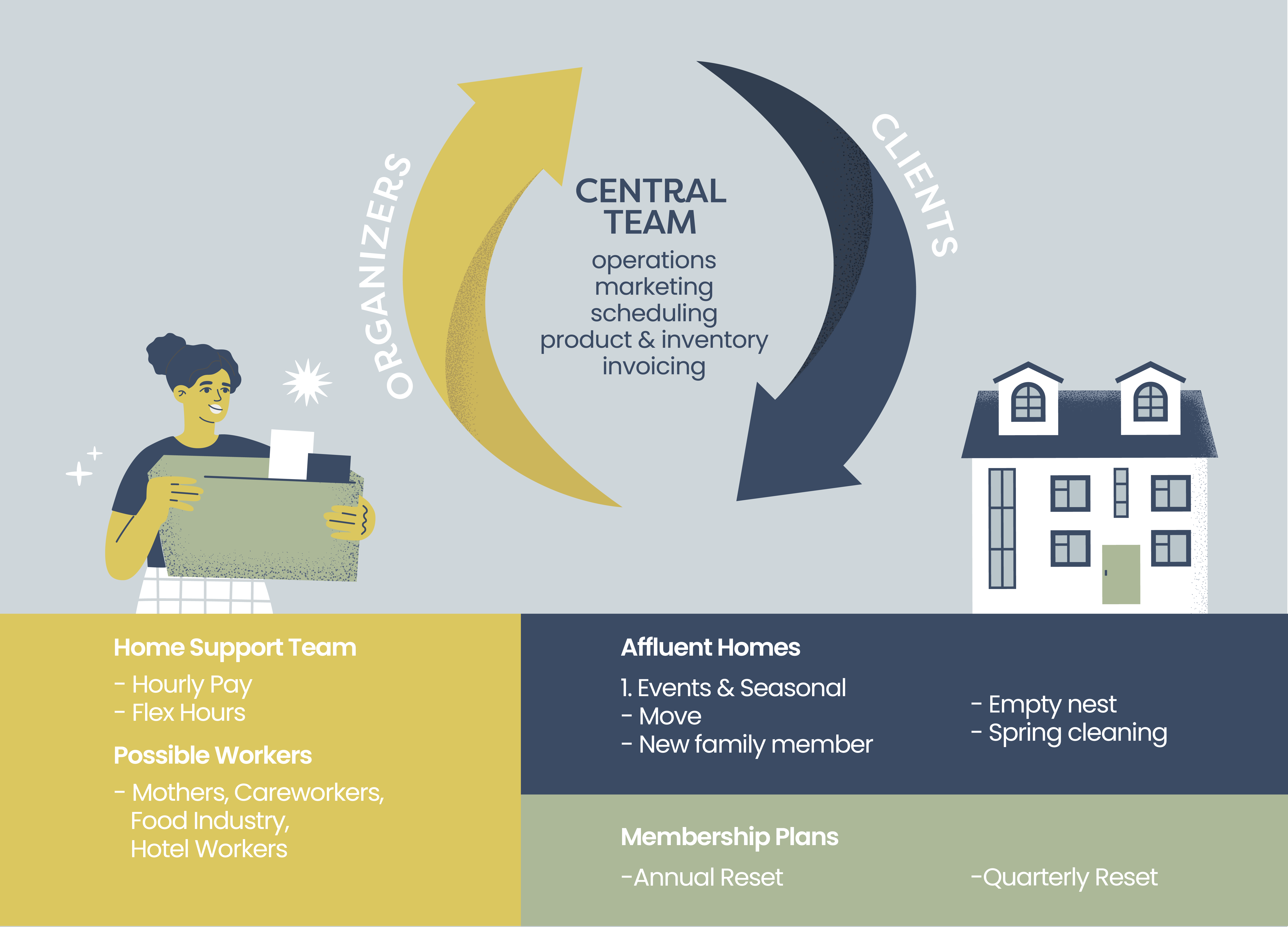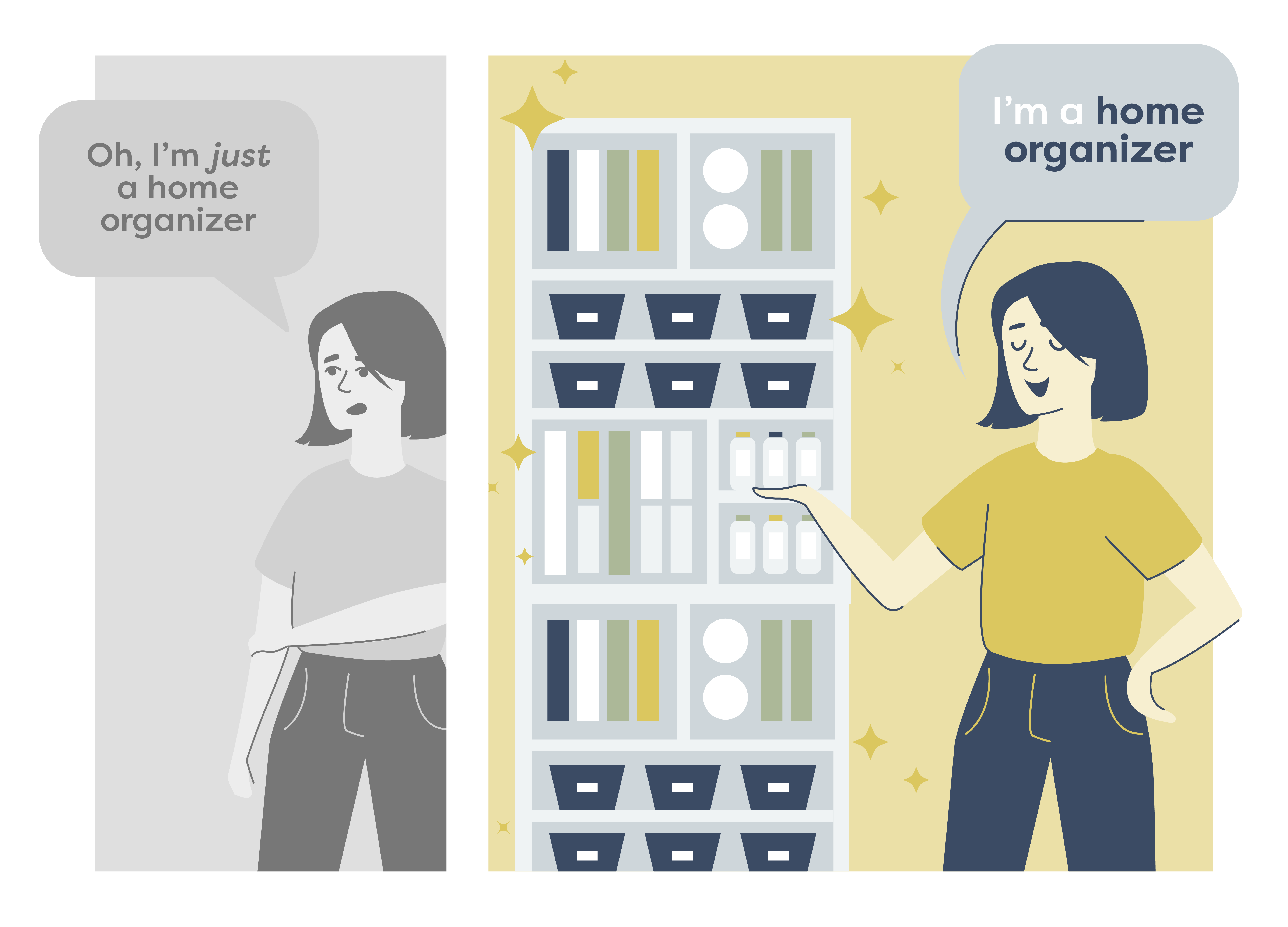Starting Cold: 3 Insights to Build the “Next Big Thing”

Over the holidays, my partner gave me The Cold Start Problem: How to Start and Scale Network Effects, written by Andrew Chen. He previously worked at Uber and is now a leading investor for early-stage consumer startups at Andreessen Horowitz, so, If I’m being honest, I opened it with a healthy amount of skepticism. That said, I am one of “those people” who love to annotate a business book during vacation—and I love it even more when the book still resonates months later. It’s been a while since I picked up a book and felt like the author might have written specific chapters with me in mind. This book did just that!
As my team at Reset Your Nest thinks about leveraging network effects, the book clarified three key elements: atomic networks, the hard side, and niche markets.
Atomic Networks
In this context, an “atomic network” is the smallest possible number of resources needed to get small groups to create a self-sustaining cycle with the potential to grow. Once an atomic network is formed and working, it is vital to invest in growth and build protective moats such as technology built for scale, making it hard for others to compete against your business. However, according to Chen, building the atomic network comes first.

At Reset Your Nest, our double-sided network comprises skilled organizers and busy households who want a premium home organization experience. The Reset Your Nest team manages operational support that will become the “platform glue” to keep affluent households and home organizers engaged in a virtuous cycle.
Our atomic network requires two sides of the network and a management platform to enable client and organizer engagement:
- Clients: Affluent households concentrated in a 60-mile radius and catalyzed by events like a move, holiday/seasonal occasion, or change in home occupancy
- Organizers: One lead organizer and a team of 4–5 associates
Once these requirements are met, growth comes from social media, marketing, and referral programs. Our defensive strategy will be the systems and technology for the “less fun” operational work done behind the scenes. In 2022, we are tightening the backend process and doubling down to understand the organizer and client needs. As CEO, my priority for the year is defining this atomic network and preparing to expand Reset Your Nest into new markets.
The Hard Side
“A network product generally wants to nudge its ecosystem toward professionalization because it helps scale their hard side.”
Chen’s description of the hard side of a network resonates as I consider our goal to professionalize home care work and elevate the status of premium home organization. Individuals willing to do the hard work of a double-sided network are harder to attract and retain. Meeting their needs matters because they are also the people who bring disproportionate value to the larger ecosystem.
Creating virtuous cycle networks requires startups attract, train, and retain the people who make up the “hard side” of the network. At Reset Your Nest, the hard side is the home organizers. Finding a skilled workforce motivated to dedicate themselves to home organizing is the biggest hurdle we experience in serving a larger pool of homes. To date, many of our home organizers are stay-at-home mothers who want a little extra income. Others are returning to work after a decade of raising a family. We hope to include men and women who are looking for supplemental work or need the flexibility to choose their work availability during the workweek. Our early organizers have told us that Reset Your Nest gives them flexibility and lets them earn a little extra income when they would otherwise not be available during a typical work week.
The Actual Hard Side—Changing the Landscape
Unfortunately, we cannot tackle the hard side of recruiting professional home organizers without considering a secondary hard problem. The U.S. economy that props up the “American Dream,” both past and present, does not acknowledge the experience of women caretakers or the labor performed behind closed doors and within homes. At the heart of undervaluing the care economy is a dirty truth: the current care labor economy originates from a culture steeped in sexism and racism. In the 1970s and ‘80s, when women went to work, no one replaced them as full-time homemakers—they just picked up additional career expectations. Half a century later, we’ve seen during the pandemic that double shifts and care continue to disproportionately burden women. While the American workforce has dramatically shifted, the expectation of care as work that women do “for love, not for money” has not. Neither has the reality that women of color perform the majority of paid home care work for less than minimum wage and no benefits. Even Reset Your Nest’s founder, Jen Martin, has had to reframe how she talks about the company she built and the professional services involved. When asked about her business, she used to say she was “just” a home organizer—until she realized that this framing was diminishing the incredibly valuable service she provided. Culturally, Jen and I believe we are at the forefront of a movement to change this bias.

When recruiting a worker we need to overcome barriers, including:
- The belief that this work is always poorly compensated and lacks benefits
- A labor system that unfairly privileges household employers when dealing with conflict or compensation
- A lack of skilled training to support growth opportunities
- Systemic barriers that have made tax codes, background checks, and worker permits unnecessarily complex
- Better support structures for women at work to align working hours with child care hours
Multiple reports have documented ways that the American economy could benefit if more women were supported with work hours that were more flexible and aligned with childcare availability. U.S Secretary of Treasury Janet Yellen says that “increasing the female participation rate to that of men would raise our gross domestic product by 5 percent.” Similarly, Melinda Gates wrote that “Providing access to childcare for women who don’t have it could mean a $3 trillion increase in global GDP.” As we welcome more women to a reinvented profession of household management services, we will be professionalizing the work, training our employees, standardizing skills, and offering better wages that attract and retain talent currently missing from the workforce.
As a company setting out to offer premium home organization services, our hard side must overcome both the challenges of recruiting great workers and the challenges of convincing a culture and system to value both this work and those who do it. We see this as an opportunity to reach a population of women who have been undervalued and to set up a network for mutual success.
Niche Markets
When selecting an atomic network, Chen notes that Clayton Christensen’s disruption theory applies at the bottom and top ends of a market. When innovating, Christensen recommends finding a hard problem and solving it better than the existing marketplace by understanding segments of underserved individuals.
Products that solve their “job to be done” will prompt innovation. Building on this, Chen says, “The next big thing will start out looking like it’s for a niche network.”
Reset Your Nest understands that busy families have a hard time organizing their homes with systems that are both beautiful and functional for their unique lifestyle and needs. Home organization requires dedicated time, specific product knowledge, and an aesthetic touch that many families do not have the bandwidth to support. We have identified a marketplace of families who are willing to pay a premium for professional home organization services and the peace of mind an organized home provides.
In my vision for growth, Reset Your Nest will one day offer a platform of household management services, including home organization, household management, grocery and meal support, concierge event and travel support, laundry, cleaning, and perhaps even child and pet care. The vision is to support busy households with a “plug and play” set of skilled services offered by hourly support and highly competent team members. The hope would be that families are less reliant on any one individual offering care while compensating livable wages for the community of caretakers. We are entering this market of services with the most premium product: home organizing and focusing on flawless execution.
Today, Reset Your Nest is a niche network supporting affluent families by making their homes easier to live in, while empowering gig workers with higher wages.
Starting Cold
Right now, we have a successful network consisting of a core group of busy families and two dozen home organizers in the Salt Lake City market who have found a passion for this small and growing company. The opportunity ahead will be to confirm our requirements for an atomic network to thrive in the next five markets. We are strengthening our ability to attract home organizers and elegantly solve a “niche problem.”
The simple truth is that this is a network composed mostly of women supporting women.
In the home and in professional settings, everyone stands to win if we recognize home organizing as a valuable form of work. Starting this virtuous cycle by allowing more women to work on their terms and focus on the work they most enjoy—is good for our communities and for our economy. Our wheel of innovation ignites when we all intentionally set up women for success at every level in the workforce and on the homefront.
What’s next?
For anyone else who is “starting cold,” visualizing our dual communities has helped our team focus on the experiences we care about and clarify each of our reasons “why” we are showing up to build this network together.
If you’ve read Cold Start, I would love to hear your reaction to the book. Even if you have not read the book, perhaps you have experience building atomic networks or recruiting for the “hard side” of a network. What did you learn from this experience?
